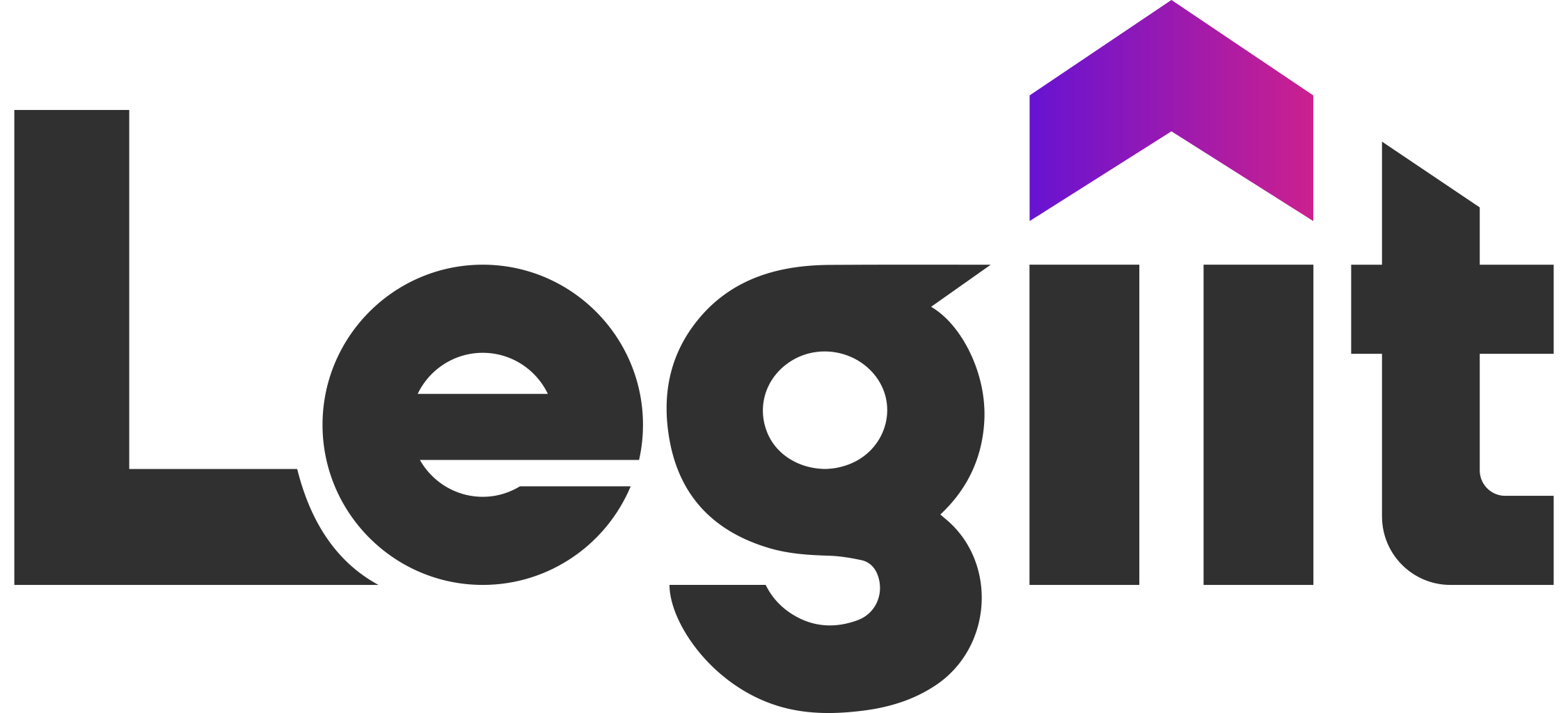Affiliate marketing Vs freelancing isn’t a very logical comparison since both are different business models.
But, it does require some addressing because they do overlap in several ways And that is why you don’t have to be selective here; you can do both at the same time.
In this post, we’ll tell you:
- Affiliate marketing Vs freelancing differences
- The benefits and drawbacks of both business models
- How to be a successful affiliate marketer as well as a freelancer
Let’s start talking.
Affiliate Marketing Vs Freelancing: Which One to Choose?
The short answer is you can work on both business models at the same time.
Freelancing and affiliate marketing complement each other in many ways.
For instance, you can offer your blogging services such as link-building as a freelancer and manage your own blogs simultaneously.
But, there’s a chance freelancing might be a better option for you than blogging, or vice versa.
Let’s first take a quick look at how they actually work.
What is Freelancing?

Here’s how Wikipedia defines a freelancer:

Freelancing is when you work with a business or company without any long-term commitment.
Freelancers are self-employed and offer their services as independent contractors.
What is Affiliate Marketing?

Affiliate marketing is a form of marketing where you promote the products of other businesses or brands.
And, as a return, you get a pre-determined commission.
Now, there are generally two types of affiliate marketing models:
- Pay-per-sale: Where you get a commission for every sale generated via your affiliate link
- Pay-per-lead: Where you get a pre-decided compensation for every lead generated through your affiliate link
Let’s take the example of Amazon Associates, one of the most popular affiliate programs.
As an Amazon Affiliate, your job is to pick a product, create its affiliate link, and promote it to the relevant audience.
And since it works on the pay-per-sale affiliate model, you make money every time someone buys a product after clicking on your link.
Now, there are pros and cons to affiliate marketing and freelancing.
Let’s take a look at both side-by-side to give you a better understanding.
Affiliate Marketing Vs Freelancing: The Differences
What Are You Selling?
Really, the biggest difference between affiliate marketing and freelancing is the stuff you’re selling.
In freelancing, you sell your services; some of the most popular freelance services include:
- Content writing
- SEO
- Graphic Designing
- Web design and development
- And, much more!
On the flip side, as an affiliate marketer, you sell other people’s products and generate commissions.
Active Vs Passive Income
Another significant difference between freelancing and affiliate marketing is the type of income.
As a freelancer, you’re paid for your time, which is why many people charge on a per-hour basis.
Freelancing is an active income where your clients reward you for your services.
On the contrary, affiliate marketing is a passive income source.
This is because your affiliate blog posts or YouTube videos continue to generate affiliate sales as long as they remain on the web.
Long-term Vs Short-term
Freelancing brings quick money.
What this means is that once your work is done, you get paid.
There’s generally no waiting period in freelancing.
On the other hand, affiliate marketing is more of a long-term business model.
It does take some time to rank organic content, and you typically have to work for several months without any reward whatsoever.
But, the tradeoff is worthwhile. You get to make affiliate commissions on autopilot.
Who Do You Deal With?
There’s typically a back-and-forth communication with clients in freelancing.
This is because you need to fully understand what your client wants before getting started.
Therefore, you need good communication skills to thrive as a freelancer, which fortunately is a skill you can learn as you go.
As far as affiliate marketing is concerned, you don’t need to deal with anyone face-to-face.
It’s all about helping people with their online purchases.
One of the biggest benefits of affiliate marketing is that you don’t have to handle after-sale customer support.
Once someone has bought a product from your affiliate link, you get your commission.
Time and Income Limitations
There’s typically a cap on the time you can take to deliver a project in freelancing.
Although you can choose your deadlines, fulfilling them can be a challenge sometimes.
Whereas, you don’t have to be answerable to anyone, except yourself, in affiliate marketing.
That said, freelancing brings in quick bucks, rewarding you quickly for your efforts.
And, the more valuable your services are the more you can earn from them.
With the differences out of the way, let’s quickly talk about the similarities between affiliate marketing and freelancing.
Similarities Between Freelancing and Affiliate Marketing
Location Independence
Location independence is of the most attractive benefits of both business models.
Whether you’re a freelancer or an affiliate marketer, you never have to worry about going to an office.
You can work from anywhere you like.
Skill Requirement
Needless to say, a freelancer needs to be skillful at whatever service they’re selling.
For instance, if you want to offer graphic design services, you need to learn the art first.
Affiliate marketing typically requires multiple skills.
For instance, if you’re promoting affiliate products through blog posts, you need to know:
- Search engine optimization
- Blog post writing
- Link-building
Competition
Because both business models offer attractive benefits, they attract a lot of online entrepreneurs.
As a result, the overall competition increases.
However, know that you can minimize this competition by picking up a niche and getting very good at it.
As a freelancer, you can do that by picking a specific skill, like content writing, graphic designing, web development, or more.
Picking a niche in affiliate marketing would mean that you grow a blog on a specific sub-topic.
For instance, rather than trying to build authority in digital marketing, you focus on one of its categories, like SEO.
Minimal Initial Investment Needed
You can start freelancing and affiliate marketing with minimal to no initial capital.
As for freelancing, all you need to do is create and optimize your profile on platforms like Legiit.
Once you have an attractive profile around in-demand services, start interacting on Legiit’s official Facebook group to get noticed.
As for affiliate marketing, your initial expense depends on what platform you choose to promote your affiliate offers.
For instance, affiliate blogging requires some investment in the form of a domain name and web hosting.
Whereas, if you want to go the YouTube route, you can start creating and publishing content for free.
With the differences and similarities out of the way, let’s walk you through the benefits and drawbacks of both.
Benefits of Affiliate Marketing
Affiliate marketing offers a win-win situation for both businesses and affiliates.
As a business, you can just let marketers generate leads and sales for you.
Of course, you’ll have to offer them something in return, which is almost always a certain percentage per conversion.
But, the good thing is you don’t have to pay them anything upfront.
Anyway, if you’re thinking of becoming an affiliate marketer, the following benefits might solidify your commitment.
A Perfect Passive Income Source
One of the most attractive benefits of affiliate marketing is that it’s a passive income source. This is because your affiliate content, including blog posts, videos, and forum posts, can get traffic for years.
You Don’t Need Your Own Product
As an affiliate, you don’t need to develop and manage your own product.
You simply pick the best-performing ones in your market and start promoting them.
No After-Sale Service
When you don’t own a product, you don’t have to deal with customers.
As an affiliate, all you need to do is sell already established products.
The rest of the matters are taken care of by the business that owns the product.
Drawbacks of Affiliate Marketing
The benefits of affiliate marketing outweigh its drawbacks by far.
Probably the only considerable drawback is that you don’t own the affiliate network you work with.
As a result, you don’t have full control over how you promote their affiliate links.
For instance, Amazon doesn’t allow affiliates to promote affiliate links directly in their emails.
Benefits of Freelancing
Time Independence
You can work on your freelancing projects whenever you want.
Of course, there are deadlines to keep, so you’d need to be good at time management.
Consistent Skill Development
From pitching clients to managing your deadlines, you need to handle everything yourself as a freelancer.
This polishes your leadership, time-management, and technical skills.
And, as you get better, you can start charging more.
Get Paid Quickly
Typically, there’s zero to minimum waiting time when it comes to receiving your payments in freelancing.
Drawbacks of Freelancing
Freelancing gives you time and location independence, with a bunch of other benefits, but it’s not for everyone.
For one, getting your foot in the freelancing door can be overwhelming if:
- You aren’t skillful enough
- Your skills aren’t in-demand
- You don’t know the process
- You’re not willing to do the required work
Fortunately, getting started as a freelancer on Legiit tends to be a lot easier than on other platforms because:
- You can promote yourself as a service provider in a lot of effective ways
- It’s one of the fastest-growing freelance platforms in the world
How to Start Affiliate Marketing?
Pick a Platform
Now, there are several platforms you can do affiliate marketing on.
Instagram can also work if you can build a loyal following around your niche.
A lot of influencers are also affiliate marketers.
But, blogging and YouTube are the two of the most effective and easiest ways to build an audience.
The cool thing is starting a blog doesn’t have to cost you more than a few dollars per month.
All you need to invest in is a good domain name and hosting service.
Content publishing and SEO would be your long-term investments in affiliate blogging.
The second platform is YouTube.
Anyone can start uploading their videos on YouTube for free, which makes it an ideal option for beginners.
Just make sure to optimize your videos for SEO and create valuable, helpful content.
The cool thing is: You can include your affiliate links under your YouTube videos.
Whatever platform you choose for affiliate marketing, it’s mandatory to include an affiliate disclosure.
On an affiliate blog, you can create a separate affiliate disclosure page, or add the disclosure in the footer.
Moreover, getting clicks on affiliate links tends to be easier on a blog as compared to a YouTube video.
Choose a Niche
Let’s face it. Starting a blog today means facing a lot of competition.
According to research, 2.3 million blog posts are published on WordPress sites every day. The best way to sidestep that competition? Niche-down!
This means creating a blog on a specific category of a larger market.
For instance, “Food” is too broad, but “Grilled food” is not.
A niche is just a smaller market within a market.
Focusing on a particular niche can help you:
- Build a more focused audience and establish authority quicker
- Rank on Google in a relatively less time
Once you’ve covered most of the topics in that niche, you can expand into other categories.
Note: You should publish content on your affiliate blog regularly, which can be tough in a niche that doesn’t interest you much.
So, don’t just work on a niche because it’s profitable.
If you’re outsourcing your blog posts, be sure to work with seasoned experts.
It’ll help you build authority and eventually generate more affiliate sales.
Join Affiliate Programs

Now, you can try joining any affiliate program you find online.
But, the reality is that not all are suitable for beginners.
For instance, high-ticket affiliate programs with a small market can be super competitive.
This is because your odds of getting accepted as a beginner would be quite low.
So, you want to go for the low-ticket, high-volume affiliate networks, for instance, Amazon Associates.
There are tons of daily-use, inexpensive products on Amazon that sell like crazy.
It’d be fairly easy for you to sell them to your audience.
But, of course, you’ll need a good amount of traffic in order to generate enough income with low-ticket programs.
So, how do you find the right affiliate programs for you?
This would mainly depend on your expertise level and niche.
You can do a quick Google search to find the right affiliate programs.
Here’s an example:

Create Great Content
In order to succeed in affiliate blogging, you need to create high-quality, helpful content.
Most of your content should be aimed at solving visitors’ problems.
Also, you don’t want to review every product in the market.
Make sure whatever you recommend to your audience does what it’s supposed to do.
Plus, your content should appeal to both search engines as well as readers.
Optimizing your blog posts for search engines means:
- Using your target keywords in the right places (URL, headings, paragraphs, image alt texts), at the right frequency
- Writing user-friendly content
- Including visuals
Drive Traffic
Now, driving traffic to your affiliate blog posts shouldn’t be a problem if you work on the right keywords and produce SEO-friendly content,
But, you don’t have to restrict yourself to organic traffic only.
- You can also use advertising to get quick traffic to your posts, but it’d cost you upfront
- The second method is to build an email list
How to Be a Freelancer?
The cool thing about freelancing is that you can do it in your spare time.
You don’t have to invest a lot of your time doing it.
But, of course, the more you invest in terms of time and energy, the more you can earn from your craft.
Decide On a Skill First
you want to find the right freelancing occupation for yourself.
It could be something related to your existing expertise or a completely new skill.
Here are a few popular skills clients all over the world are looking for:
- Writing
- Web development
- Graphic Designing
- App development
- Digital Marketing
Package Your Skills
Once you’ve decided what skill to offer, it’s time to package that skill into a service.
Your goal is to understand what clients are looking for and offer your service as a cost-effective solution.
Create a Portfolio
The next thing you should be doing to get your foot in the door is creating a portfolio.
At this stage, you don’t want to shy away from doing work at low prices.
Create Freelancing Profile
Once you have a marketable skill and some portfolio to show, create your freelancer profile on Legiit with relevant service pages.
Let’s quickly guide you on how to create a service page on Legiit.
First, sign up on Legiit, go to the “Services” page, and select “Add new service”.

Next, add your:
- Service title
- Service subtitle
- Category
- Sub-category

On the next page, you can set your:
- Pricing
- Delivery days
- Number of revisions
You can offer three different packages.

For instance, if you’re a writer, you can offer different word counts on different packages.
The next page is where you should be spending the most time optimizing your service.
Unlike other freelancing sites, Legiit lets you write a detailed description of your page.
You can add anything you think can help sell your service without worrying about the character limit.
You can add images, videos, and client testimonials to improve your conversion rate.

Then, add the information you need from the buyer.
For instance, for a content writing service, you can ask for the topic/keywords.

You can even add questions. On the next page, you’d be asked to upload your service media.
It’s mandatory to add at least one image, which would act as your service’s thumbnail.

Make sure your image is eye-catching and effectively represents your service.
Lastly, just hit “Publish” and your service will go live after being reviewed by the Legiit support team.
Your service will be live in no time, and it’s time to promote it.
So, join Legiit’s Facebook group, interact, and get noticed by potential clients.

Getting your first freelancing project is all about presenting your service to the right people in the right manner.
Once you get your first order, it’s all about effective communication and providing top-notch service.
Build a Relationship With Your Client
Normally, if you provide great services, your first-time buyer will become your repeat buyer. But, you need to build a strong relationship with them by actually helping their business move forward.
Plus, effective communication is critical when it comes to nurturing business relationships. And, by delivering on time every single time, you make yourself a reliable resource for your client.
Keep Developing Your Skills
As a freelancer, you’re hired to offer the latest and most in-demand skills.
Freelancing is a continuously changing industry.
So, you need to keep upgrading your skillset according to the latest trends.
Affiliate Marketing Vs Freelancing: Can You Choose Both?
Absolutely. By now, you know how both of these business models work.
So, if you think you can manage both at the same time, there’s nothing that should prevent that.
The good thing is freelancing and affiliate marketing complement each other in some areas.
Most of the skills you’ll learn while doing affiliate marketing are sellable as freelance services.
These skills include:
- Keyword research
- SEO
- Content writing
- Link-building
- And, more
So, you can offer these services as a freelancer and manage your affiliate business on the side.
Just make sure you have the time and capacity to manage both effectively.
Affiliate Marketing Vs Freelancing: Conclusion
This was all about affiliate marketing vs freelancing.
We hope you enjoyed this guide and now have the clarity of mind to move forward with confidence.
Affiliate marketing is a great source of passive income, whereas freelancing brings in quick bucks.
It doesn’t have to be an either-or option though; you can have the best of both worlds.
If you want to scale, you’d need to build and manage a team.
And Legiit is the best place to do just that.













 Download
Download